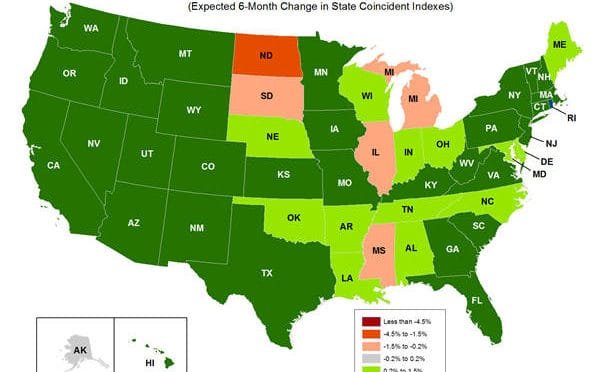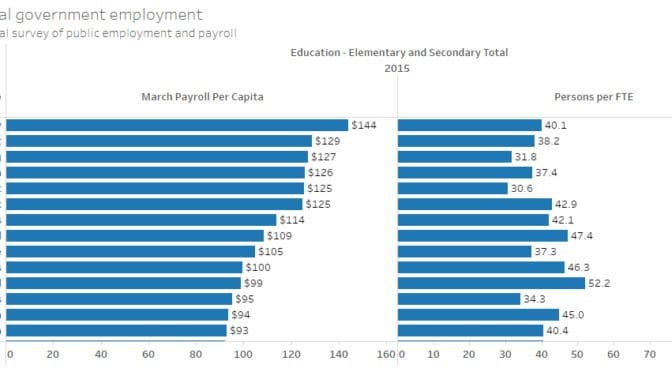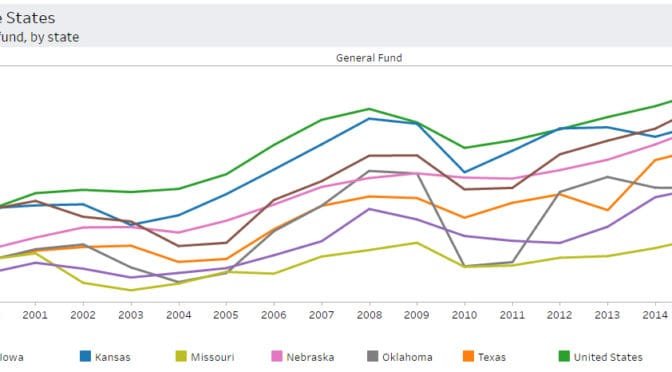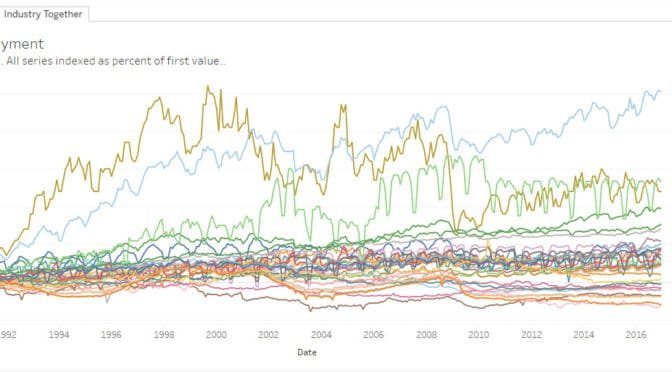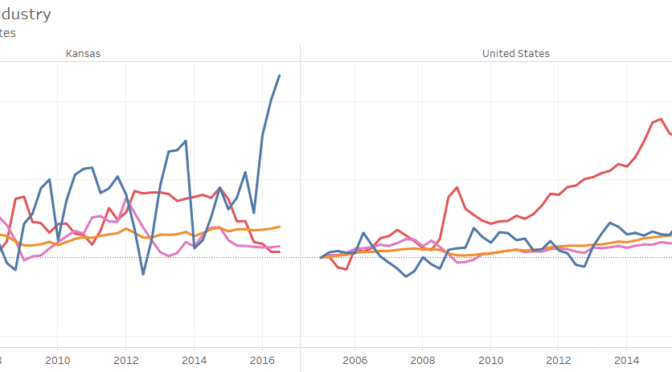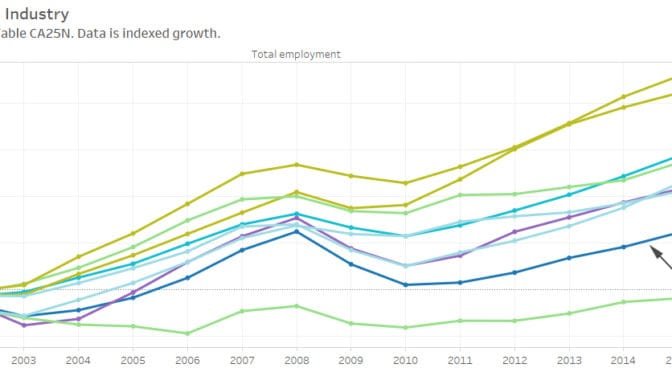The evaluation of economic development incentives in Wichita and Kansas requires thinking at the margin, not the entirety.
When considering the effect of economic development incentives, cities like Wichita use a benefit-cost analysis to determine whether the incentive is in the best interests of the city. The analysis usually also considers the county, state, and school districts (although these jurisdictions have no say over whether the incentive is granted, with a few exceptions). The idea is that by paying money now or forgiving future taxes, the city gains even more in increased tax collections. This is then pitched as a good deal for taxpayers: The city gets more jobs (usually) and a “profit,” too.
Economic activity usually generates tax revenue that flows to governmental agencies. When people work, they pay income taxes. When they make purchases, they pay sales taxes. When they buy existing property or create new property, they pay property taxes. This happens whether or not the economic activity is a result of government incentives. This is a key point that deserves more exploration.
Government often claims that without an incentive provided by government, a company would not have located in Wichita. Or, without the incentive, it would not have expanded in Wichita. Now, the city says incentives are necessary to persuade companies to consider remaining in Wichita rather than moving somewhere else.
But there are a few problems with the arguments that cities, states, and their economic development agencies promote. One is that the increase in tax revenue happens regardless of whether the company has received incentives. Therefore, the benefit-cost ratio calculations are valid only if incentives were absolutely necessary. Otherwise, government claims credit for something that was going to happen anyway. This is a big question that deserves exploration.
For example, what about all the companies that locate to Wichita, or expand in Wichita, or simply remain in Wichita without receiving incentives? How do we calculate the benefit-cost ratio when a company receives no incentives? The answer is it can’t be calculated, as there is no government cost, so the divisor in the equation is zero. Instead, there is only benefit.
Then, we don’t often ask why some companies need incentives, and others do not. Do the companies that receive incentives really need them? Is it really true that a business investment is not feasible without subsidy? Why do some companies receive incentives multiple times while others thrive without incentives?
We may never know
We may never know the answer to these questions. Here’s why. Suppose fictional company XYZ Enterprises, Inc. dangles the idea of moving from Wichita to some other city. XYZ cites incentive packages offered by other cities. Wichita and the state then come up with millions in incentives, and XYZ decides to remain in Wichita. Question: Were the incentives necessary? Was the threat to move genuine? If XYZ admits the threat was not real, then it has falsely held Wichita and Kansas hostage for incentives. If the city or state admits the threat was not real, then citizens wonder why government gave away so much.
So we’ll never really know. Everyone involved has incentive to maintain the fiction and avoid letting the truth leak out.
A small lever moves big boulders, they say
Related is that jurisdictions may grant relatively small incentives and then take credit for the entire deal. I’ve been told that when economic development agencies learn of a company moving to an area or expanding their Wichita operations, they swoop in with small incentives and take credit for the entire deal. The agency is then able to point to a small incentive and take credit for the entire deal. As you can imagine, it’s difficult to get the involved parties to speak on the record about this.
Further, governments may not credit the contribution of other governments. In the past when the Wichita economic development office presented information about an incentive it proposed to offer to a company, it would sometimes list the incentives the company is receiving from other governments. As an example, when the city offered incentives to NetApp in 2012, the city’s contribution was given as a maximum of $418,000. The agenda material mentioned — obliquely — that the State of Kansas was involved in the incentive package. Inquiry to the Kansas Department of Commerce revealed that the state had promoted incentives worth $35,160,017 to NetApp. Wichita’s incentive contribution is just 1.2 percent of what the state offered, which makes us wonder if the Wichita incentive was truly needed. Nonetheless, Wichita city officials spoke as though the city alone was responsible for NetApp’s decision.
The importance of marginal thinking
When evaluating economic development incentives, we often fail to properly evaluate the marginal gains. Here’s an example of the importance of looking at marginal gains rather than the whole. In 2012, the City of Wichita developed a program called New HOME (New Home Ownership Made Easy). The crux of the program is to rebate Wichita city property taxes for five years to those who buy newly-built homes in certain neighborhoods under certain conditions.
 The important question is how much new activity this program will induce. Often government takes credit for all economic activity that takes place. This ignores the economic activity that was going to take place naturally — in this case, new homes that are going to be built even without this subsidy program. According to data compiled by Wichita Area Builders Association and the WSU Center for Economic Development and Business Research — this is the data that was current at the time the Wichita city council made its decision to authorize the program — in 2011 462 new homes were started in the City of Wichita. The HOME program contemplated subsidizing 1,000 homes in a period of 22 months. That’s a rate of 545 homes per year — not much more than the present rate of 462 per year. But, the city has to give up collecting property tax on all these homes — even the ones that would be built anyway.
The important question is how much new activity this program will induce. Often government takes credit for all economic activity that takes place. This ignores the economic activity that was going to take place naturally — in this case, new homes that are going to be built even without this subsidy program. According to data compiled by Wichita Area Builders Association and the WSU Center for Economic Development and Business Research — this is the data that was current at the time the Wichita city council made its decision to authorize the program — in 2011 462 new homes were started in the City of Wichita. The HOME program contemplated subsidizing 1,000 homes in a period of 22 months. That’s a rate of 545 homes per year — not much more than the present rate of 462 per year. But, the city has to give up collecting property tax on all these homes — even the ones that would be built anyway.
What we’re talking about is possibly inducing a small amount of additional activity over what would happen naturally and organically. But we have to subsidize a very large number of houses in order to achieve that. The lesson is that we need to evaluate the costs of this program based on the marginal activity it may induce, not all activity.
For more, see Wichita new home tax rebate program: The analysis.
—
Notes


